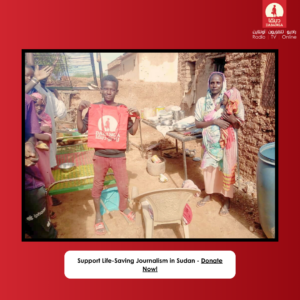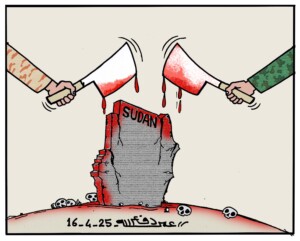Sudan daily publishes report about widespread poverty
A Sudanese daily newspaper published the findings of a IMF and World Bank report on the high poverty rate in Sudan, being the first daily in the country to report on the paper.
A Sudanese daily newspaper published the findings of a IMF and World Bank report on the high poverty rate in Sudan, being the first daily in the country to report on the paper – three years after its publication.
The Interim Poverty Reduction Strategy Paper by the International Monetary Fund, produced in consultation with the World Bank and the Sudanese Ministry of Finance, dates back to October 2013. The report acknowledged the poverty rise in Sudan and described it as a rural phenomenon.
The publication of this paper was not allowed in Sudan, however, in an attempt by the regime to hide information about poverty in the country from the public. Newspaper seizures are common in Sudan, which consistently ranks near the bottom of world press freedom indexes. El Jareeda is one of the newspapers that have been seized often by the Sudanese intelligence (NISS), and sued the security service last December.
Senior NISS officials recently justified the repeated confiscations of newspapers by saying it is a punitive measure for when a newspaper touches issues related to foreign relations and security of the Sudanese society. In recent years the authority to 'pre-publication censoring' has been restored and the NISS issued a number of 'red lines' on matters that are not supposed to be covered by the media.
Poverty rate
But this week the independent El Jareeda newspaper decided to publish the findings of the IMF report on the high poverty rate in Sudan. Nearly one out of two Sudanese households lived below the poverty line, according to a large-scale household survey in 2009, representing approximately 14.4 million people. In this report the poverty line was calculated as the value of the monthly total consumption below SDG114 ($17.05).
Higher rates of poverty in rural areas of Sudan
The 2013 joint assessment of the IMF, World Bank and Sudanese Ministry of Finance on a strategy to reduce poverty in Sudan has pointed out that poverty is deeply rooted in the country. Most of the poor people lived relatively below the poverty line, leading to high rates of poverty in rural areas (57.6 percent) compared with urban areas (25.5 percent).
Rural areas were inhabited by nearly two-thirds of the population and are predominantly agricultural, according to the report, with differing poverty rates. While it amounted to 26 percent in Khartoum, it exceeded 60 percent in some states such as North Darfur. It pointed to the the low rates of poverty in River Nile, Kassala and Northern states.
The report found that root causes of persistent poverty in Sudan are the wars and the destruction of good governance and physical capital, the urban bias of development policies in the past, low allocation of public resources to poverty reduction priorities, particularly agricultural development, and the burden of an unsustainable external debt and long economic international sanctions against Sudan.
Press curbs justified
Starting 2017 there have been no reports of repeated newspaper confiscations, however the Assistant to the President told a news conference on 29 December that “no political party or media body is allowed to threaten the security of the State”, justifying restrictions on political and press freedoms because of the security conditions prevailing in the country. The same day journalists from El Jareeda handed a memorandum to the National Council for Press and Publications in protest against their newspaper’s repeated confiscation.
The full Interim Poverty Reduction Strategy Paper by the International Monetary Fund (October 2013)











 and then
and then